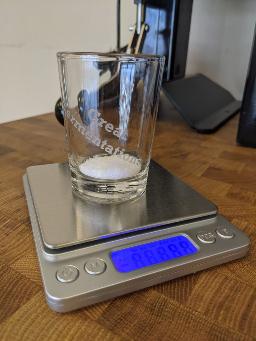Recently we launched an exciting new beer kit here at Great Fermentations - Dumpster Fire IPA. It is a New England Style hazy & juicy IPA and is our biggest and most ambitious IPA to date. As an aside, it's also our tribute to the year of 2020 and the multitude of challenges it presented, but we won't get into that here though (yay); we're here to talk about New England IPA!
Brewers mostly focus on the ingredients when formulating their hazy IPAs. That's not to say ingredients are unimportant (trust us, they're important!), but there are two OTHER aspects of brewing this style of beer that are often overlooked: your water profile and minimizing oxygen. While both of these are part of brewing most styles of beer, they are crucial to crafting that Hazy, Juice-bomb IPA so many of us beer nerds crave. So let's dig in!
Hazy IPA Water Profile

Water profiles are important in most beers, but it is crucial in NEIPA. We want to be on the higher side of the chloride to achieve that soft pillow-esqe taste and mouthfeel. There is no concrete rule to this, but to achieve that New England IPA taste, you'll want to stick with more Chloride than Sulfate. We start with Reverse Osmosis water and add salts to the Mash, Sparge and Boil. Here's a quick rundown of what we use on our Foundry batches of Dumpster Fire:
Hazy IPA Water Profile for a 5 Gal. All Grain Batch:
Mash: 6.5 Gallons of RO water.
- 5G CaCl
- 2.4G Gypsum
Sparge: 2 Gallons of RO water
- 5G CaCl
- 2.4G Gypsum
Boil: Approx 7 gallons of Wort
- 4.5G MgSO (Epsom Salt)
- 1.6G NaCL (Canning Salt)
For Extract Brewers it's a bit different. Your salt addition will consist of one teaspoon (tsp) of Calcium Chloride after the steep and before the boil. The primary reason for this is because we don't know what water profile was used during the creation of the extract. We'll operate under the assumption that it is a balanced profile, and since we want to be heavier on CaCl, we'll add a little bit to set it over the edge.
There are many, many resources out there discussing water, water profiles, and salt additions. This is but one option that we found worked for us while developing the Dumpster Fire kit. Nailing down a water profile that works for you and your beer is one of the rewarding aspects of homebrewing.
Minimizing Oxygen
Oxygen plays a role in almost every beer that is brewed. Most of the time, it's crucial to aid in a complete fermentation. All of our recipe kits have a step that asks you to shake your beer. This is to help get some oxygen dissolved into the wort as it aids in fermentation. Post fermentation, we ask you to try to reduce as much oxygen as possible. "Minimizing head space", "transferring quietly" and "capping on foam" are a few of the basic techniques you can use to help cut down on oxygen exposure. In NEIPA, Oxygen exposure can:
- Diminish some of the delicate hop forward flavor.
- Add a cardboard taste.
- Mask the hop aroma we're shooting for.
- Darken the color of the beer.
Do whatever you can to reduce exposure and remember to drink this beer as quickly as possible.
As always, leave a message or contact us if you have any questions.
Happy Brewing!








